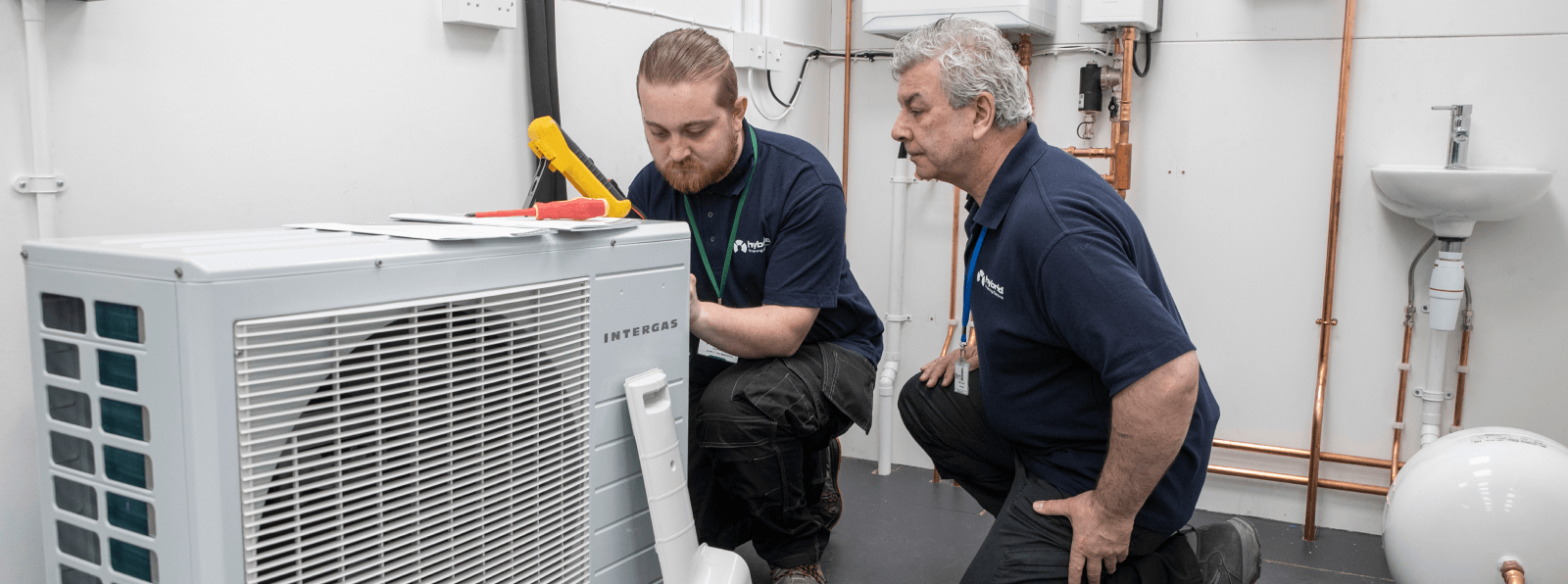OFSTED report
Scroll
Senior leaders have formulated a clear strategy to provide training for levy-funded apprentices for floor coverings at level 2 and gas engineering at level 3. Staff have extensive specialist expertise in these vocational areas and use their expertise well to promote learning. Managers and staff work closely with employers to ensure that programmes meet the needs of employers and the requirements of apprenticeships.
Leaders and managers have established highly effective links with employers and with manufacturers. Employers are involved closely in facilitating effective training for their apprentices with the provider, and in the workplace. Employers meet frequently with their apprentices and with HTSL assessors. This helps to keep apprentices engaged and motivated to achieve their qualifications.
Employers benefit from the close relationships and good communication with Hybrid Technical Services. These effective working relationships have a positive impact on the good progress that apprentices make. For example, one employer wanted a gas engineering apprentice to practise on a specific piece of industrial equipment that was not part of the requirements of the framework. Managers were able to accommodate this request.
Leaders and managers maintain useful links with sector manufacturers and employers. This enables them to provide a broad range of guest speakers who share their specialist knowledge to increase the sector-specific knowledge and understanding of apprentices. As a result, most apprentices benefit from additional training outside the requirements of their apprenticeship programmes. This includes specific training for working at height, asbestos awareness and e-learning courses for those working with housing associations and local authorities.
Apprentices, across all programmes, develop substantial new knowledge, skills and understanding throughout their programmes. Trainer/assessors prepare apprentices well for their end-point assessment.
Recruitment of apprentices is rigorous. Leaders and managers ensure that potential apprentices and employers fully understand the requirements of the apprenticeship programme, including apprentices’ entitlement to off-the-job training. Managers only work with employers who are committed to providing apprentices with their full entitlement to off-the-job training.
Planning of the apprenticeship curriculum is effective. Prior to enrolment, assessors discuss with employers and with prospective apprentices how the programme will help them develop the skills they need and what they hope to achieve on completion of the programme. Block release programmes are well structured and designed to meet employers’ needs, building gradually on apprentices’ increasing knowledge. Managers arrange additional industrial short courses to complement apprentices’ learning programmes and provide apprentices with further knowledge and qualifications beyond those required for their qualification.
Trainer/assessors are well qualified and experienced in their specialist sectors. Trainer/assessors benefit from regular update training from industry experts to ensure that their product knowledge and industrial practice are up to date. Staff are strictly regulated within the gas industry, so they are supported to update their own certification in key aspects of safety and compliance.
Apprentices benefit from working in well-equipped training workshops that reflect current as well as older equipment. This helps gas engineering apprentices to develop the skills that they need for installing and commissioning new equipment and in finding faults and repairing older equipment.
Apprentices develop good knowledge, skills and behaviours that they require in the workplace, actively contributing to their employers’ businesses.
Apprentices develop their vocational mathematical skills well. For example, gas engineering apprentices learn about air-flow rates and combustion formulas to test the effectiveness of chimneys and exhaust systems. They calculate volumes, and the requirements for different capacity ventilation chimneys, and adapt their findings based on the type of premises.
Safeguarding policies and protocols are current and are updated regularly. The appointed designated safeguarding lead (DSL) holds suitable qualifications and undertakes appropriate training with the local authority safeguarding board. The DSL has established very close links with the local safeguarding board. Although there have been no safeguarding referrals to date, appropriate processes are in place for the reporting of safeguarding issues and concerns. Staff have a good understanding of the referral process.

Hybridtec can help you!
Enquire Now